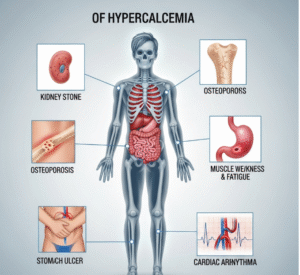Overview
A stuffy nose, also called nasal congestion, occurs when the nasal passages become swollen or blocked, making it difficult to breathe through the nose. It is a common symptom that can result from infections, allergies, environmental irritants, or structural issues.
In Korea, nasal congestion is evaluated by ENT specialists, allergists, and primary care doctors to determine the underlying cause and provide effective treatment for relief and long-term management.
Key Facts
➤ Nasal congestion results from swelling of nasal tissues and blood vessels or excessive mucus production.
➤ Can be acute (short-term), often caused by colds or infections, or chronic (lasting over 12 weeks).
➤ Affects sleep quality, breathing, and sense of smell.
➤ Common causes include allergies, infections, structural abnormalities, and irritants.
➤ In Korea, management focuses on treating underlying causes and relieving symptoms.
What is a Stuffy Nose?
A stuffy nose occurs when the mucous membranes inside the nose become inflamed, leading to narrowed nasal passages. This reduces airflow and may be accompanied by excess mucus.
➔ Common triggers include:
- Infections – viral (common cold, flu) or bacterial (sinusitis).
- Allergic reactions – dust, pollen, or pet dander.
- Environmental irritants – smoke, pollution, strong odors.
- Structural abnormalities – deviated septum, nasal polyps.
Symptoms Related to a Stuffy Nose
➤ Difficulty breathing through the nose, sometimes forcing mouth breathing.
➤ Nasal discharge – may be clear, cloudy, or colored.
➤ Sneezing, itching, or watery eyes if allergies are involved.
➤ Postnasal drip, causing throat irritation or cough.
➤ Headache or facial pressure, especially with sinus involvement.
➤ Sleep disturbances and snoring due to blocked airways.
Causes / Possible Causes
Infections
➤ Common cold – viral infection causing temporary congestion.
➤ Sinus infections (sinusitis) – bacterial or viral, with thick nasal discharge.
➤ Flu or respiratory infections – often accompanied by fever and body aches.
Allergic Causes
➤ Allergic rhinitis – triggered by allergens like pollen, dust mites, or animals.
➤ Seasonal allergies (hay fever) – usually occur at specific times of the year.
➤ Food or medication allergies may sometimes contribute.
Environmental and Irritant Causes
➤ Exposure to smoke, chemical fumes, or air pollution.
➤ Cold or dry air irritating nasal passages.
➤ Overuse of nasal sprays causing rebound congestion.
Structural Causes
➤ Deviated septum – uneven nasal passage restricting airflow.
➤ Nasal polyps – benign growths blocking nasal passages.
Other Causes
➤ Hormonal changes – pregnancy or thyroid disorders.
➤ Chronic conditions like chronic rhinitis or cystic fibrosis.
Risk Factors
➤ Individuals with allergies or asthma.
➤ Children, more prone to viral respiratory infections.
➤ Exposure to pollution, smoke, or occupational irritants.
➤ Structural abnormalities of the nose.
➤ Weakened immune system due to illness or medications.
Complications
Chronic or severe nasal congestion may lead to:
➤ Sinus infections due to impaired mucus drainage.
➤ Ear infections, especially in children.
➤ Sleep disturbances and daytime fatigue.
➤ Mouth breathing, which can lead to dry mouth or dental issues.
➤ Decreased sense of smell or taste.
When Should I See My Doctor?
Consult a healthcare provider if:
➤ Nasal congestion persists longer than 10–12 weeks.
➤ Accompanied by high fever, facial pain, or swelling.
➤ Discharge is thick, green, yellow, or bloody.
➤ Difficulty breathing, swallowing, or sleeping occurs.
➤ History of chronic sinusitis, allergies, or nasal polyps.
Care and Treatment
Lifestyle and Home Measures
➤ Saline nasal sprays or rinses to clear mucus and allergens.
➤ Maintain hydration to thin mucus.
➤ Humidify indoor air to prevent dryness.
➤ Avoid exposure to allergens, smoke, or strong odors.
➤ Practice good hand hygiene to prevent infections.
Medical Treatments
➤ Decongestants – nasal sprays or oral medications for short-term relief.
➤ Antihistamines – for allergy-related congestion.
➤ Nasal corticosteroids – reduce inflammation in chronic or allergic cases.
➤ Antibiotics if bacterial sinus infection is confirmed.
➤ Surgery – for structural issues like deviated septum or chronic polyps.
Preventive Measures
➤ Avoid known allergens and irritants.
➤ Maintain good indoor air quality and cleanliness.
➤ Vaccinations to reduce respiratory infections.
➤ Early treatment of colds, sinusitis, and allergies.
Treatment Options in Korea
Korean medical facilities provide comprehensive care for nasal congestion, including:
Diagnostic Services
➤ Nasal endoscopy to examine structural issues or polyps.
➤ Allergy testing – skin prick or blood tests.
➤ Imaging – sinus X-rays or CT scans for chronic cases.
➤ Laboratory tests to identify infections or chronic inflammation.
Therapies and Supportive Care
➤ Prescription antihistamines, nasal corticosteroids, and decongestants.
➤ Saline irrigation therapy for daily symptom relief.
➤ Antibiotics for confirmed bacterial sinus infections.
➤ Surgical intervention for deviated septum or persistent polyps.
➤ Multidisciplinary care including ENT specialists, allergists, and primary care physicians.
✅ In summary: A stuffy nose, or nasal congestion, is a common symptom with multiple causes, including infections, allergies, irritants, and structural abnormalities. In Korea, accurate diagnosis and individualized treatment ensure relief from symptoms, prevention of complications, and improved breathing and sleep quality.













